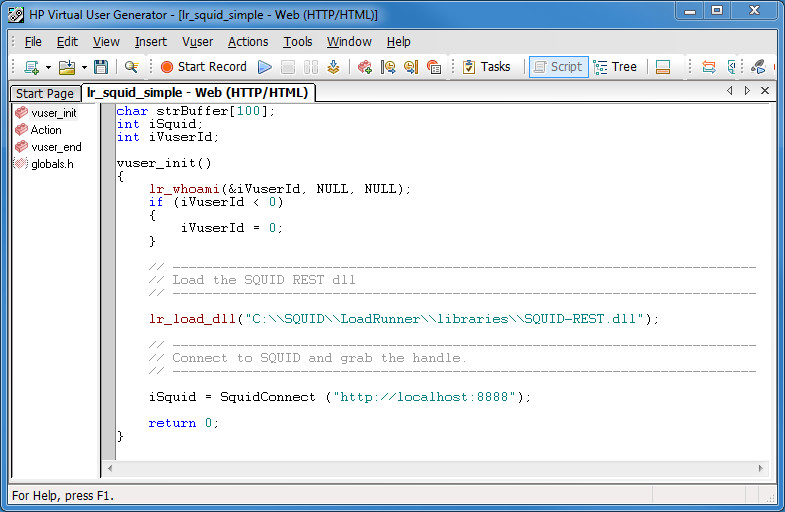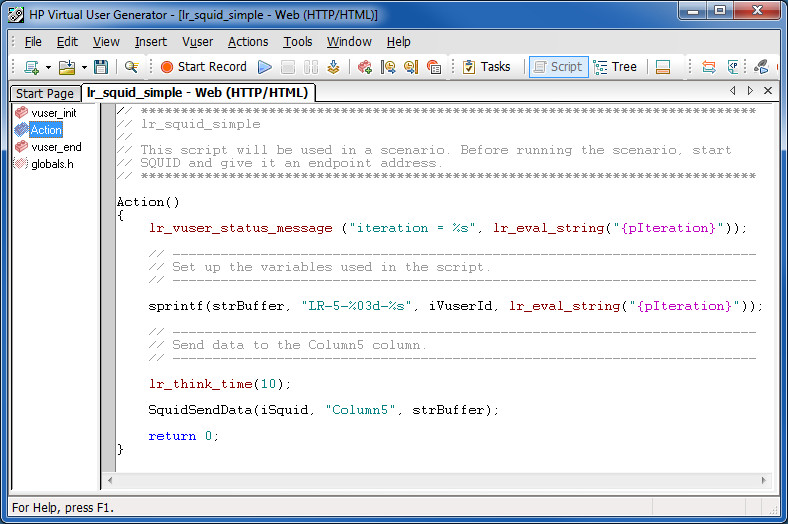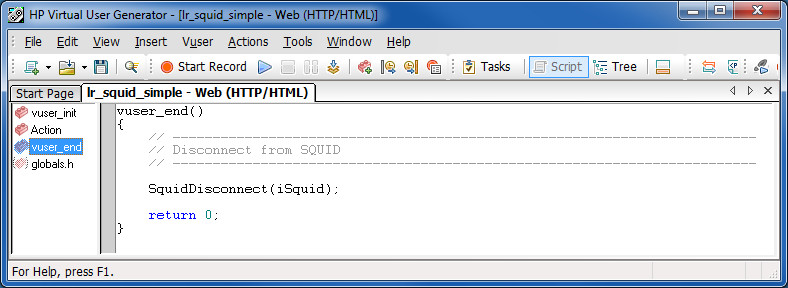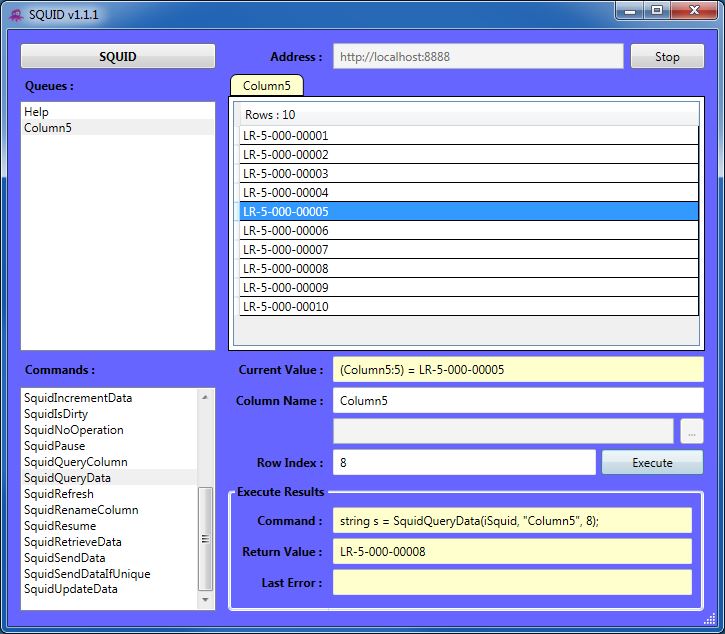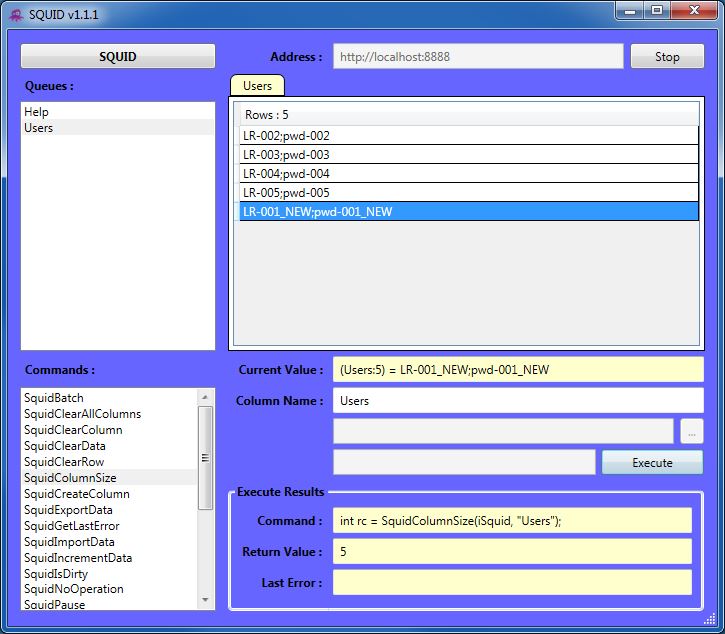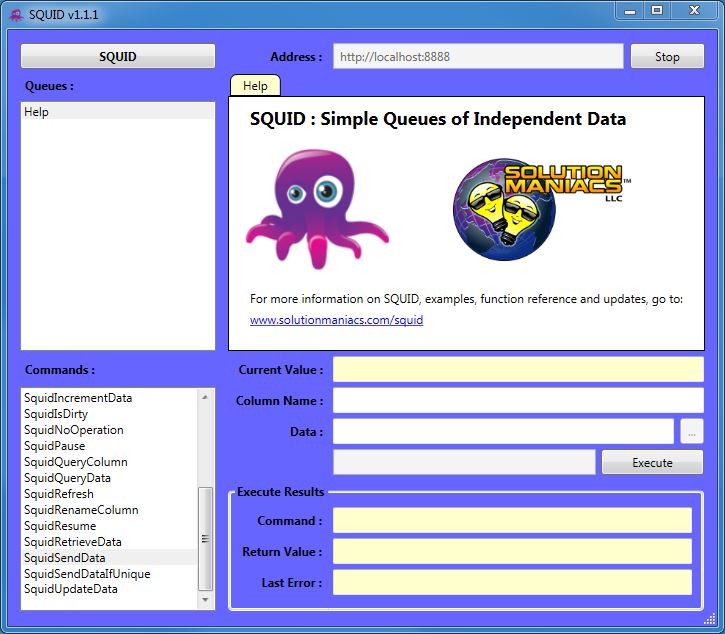SQUID
- Free
- Download SQUID
- Latest version is 1.1.1
- SQUID readme file
- Change log
- SQUID function reference
- SQUID Examples
- Latest SQUID news/info/tips on the Solution Maniacs blog.
![]() SQUID - Simple Queues of Independent Data
SQUID - Simple Queues of Independent Data
- Alternative to the VTS (Virtual Table Server) from Mercury/HP.
- Think of SQUID as a multi-user spreadsheet, allowing virtual users to 'talk' to one another.
- Data can be added, removed or just queried.
- Excellent mechanism to accommodate data that needs to be unique across all virtual users and scripts.
![]() Features
Features
- Storage and manipulation of data in dynamic queues.
- SQUID is a WCF application. Any application that can call web service endpoints can use SQUID.
- Utilized for data loading.
- Used in load testing to permit virtual users to communicate; promotes modular scripts (the entire business flow does not need to be in one script).
- Ability to create a script 'critical section' (only have 1 vuser at a time execute a particular set of steps).
- Power to set up unique parameters without worrying about unused, blocked data usage; contains a built in type of data "burn-down."
- Employed as an output mechanism; provides status on good, bad and/or incomplete type operations.
- Allows unique data to be used across virtual users, scripts and scenario groups.
- GUI is written with WPF; the communication is handled through WCF.
- Can run multiple SQUIDs; each responding to a different endpoint address.
- LoadRunner can communicate with SQUID through either a SOAP or REST interface.
![]() Requirements/Installation/Setup
Requirements/Installation/Setup
- Windows .NET Framework 4.0.
- VC++ 2010 Redistributable Package (x86 or x64).
- Run as admin. May have to create a firewall rule for machine communication.
- SQUID is just an executable, a config file and a dll (SOAP or REST). That's it!
![]() Usage Overview
Usage Overview
- SQUID is composed of 4 files: SQUID-SOAP.dll, SQUID-REST.dll, SQUID.exe and SQUID.exe.config.
- SQUID.exe (and its config file) is a WPF/WCF application that should be run on a generator by itself.
- SQUID-SOAP.dll/SQUID-REST.dll is a dll to be loaded by LoadRunner via the lr_load_dll function call.
- SQUID function reference
